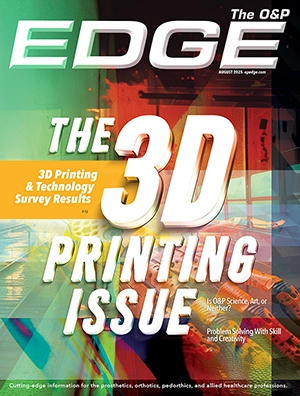To increase the objective measurement data about lower-limb prosthesis fitting, a team of researchers used optoelectronic motion capture to measure the 5 degree of freedom coupling effectiveness of a newly fitted prosthetic limb for a unilateral transtibial prosthesis user.
The two-part calibration and trial data collection system used Qualisys 3D motion capture to track the relative position of the limb and socket during walking trials over a six-week adjustment period for a 27-year-old man. He was fitted with a new prosthetic socket and attended weekly data capture sessions using his prosthesis normally.
The data led the researchers to suggest an alteration in prosthesis-residuum coupling performance. Notably, the average proximal/distal displacement (pistoning) increased from 3.36mm to 10.60mm at week six from the first fit, which further increased to 12.90mm with the use of a single prosthetic sock. The participant-reported Socket Comfort Score decreased from 9 to 7 during this time.
The researchers concluded that the pilot study could form the basis for larger studies determining a framework for safe and comfortable coupling limits.
The study, “Quantifying dynamic coupling and fit degeneration of transtibial prosthetics using 3D motion capture,” was published in Prosthetics and Orthotics International.



